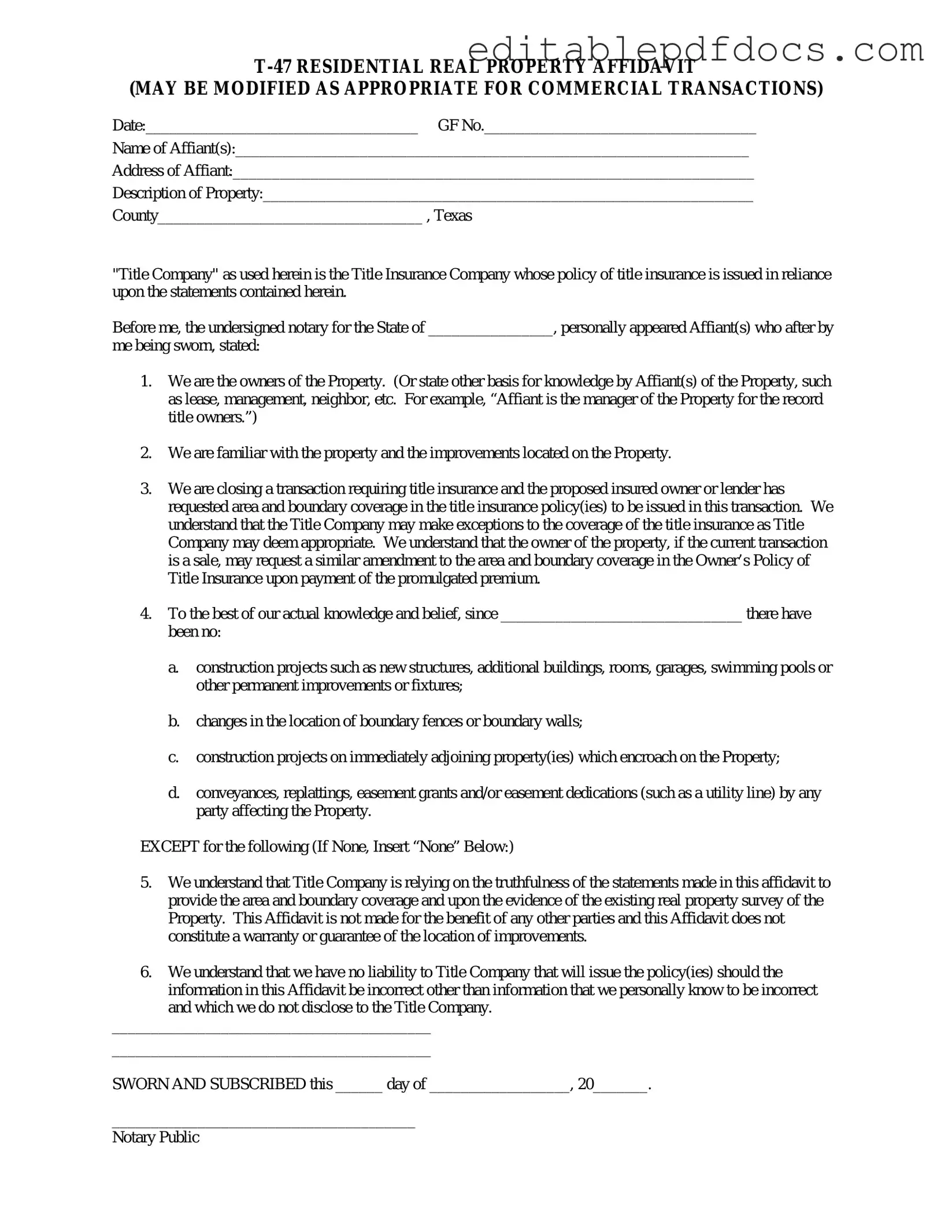Filling out the Texas residential property affidavit T-47 form can be straightforward, but mistakes can easily occur. One common error is not providing accurate property descriptions. When the property description is vague or incorrect, it can lead to complications during the transaction. Ensure that the legal description matches what is on the property deed.
Another frequent mistake is failing to include all required signatures. The form must be signed by all parties involved in the transaction. If someone neglects to sign, it can delay the process or even invalidate the affidavit. Always double-check that everyone has signed before submitting the form.
People often overlook the importance of dates. Filling in the wrong date or leaving the date section blank can cause confusion. It's crucial to provide the correct date of the affidavit to ensure that it aligns with other documents in the transaction.
Additionally, some individuals mistakenly assume that the T-47 form is optional. In reality, it is often a necessary part of the closing process. Not submitting it when required can result in delays or issues with title insurance. Always confirm whether the form is needed for your specific situation.
Another common error is providing incomplete information about the property’s condition. The affidavit requires a truthful statement regarding any known defects or issues. Omitting this information can lead to legal complications down the line, so be thorough and honest.
People sometimes misinterpret the purpose of the affidavit. It is meant to confirm the property’s ownership and any relevant details, not to serve as a sales contract. Misunderstanding this can lead to improper use of the form and potential disputes.
Finally, many individuals fail to keep copies of the completed form. After submission, it’s important to retain a copy for personal records. This can be helpful if any questions arise in the future regarding the transaction or property ownership.
